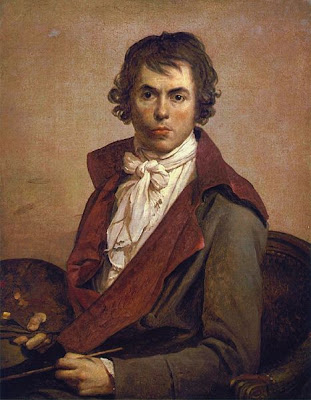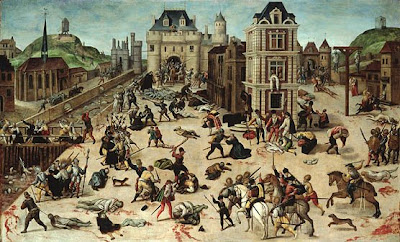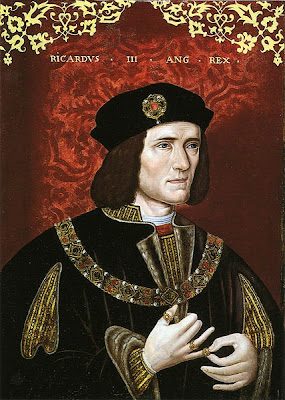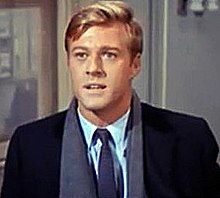Alan Jay Lerner (August 31, 1918 – June 14, 1986) was an American Broadway lyricist and librettist. Together with Frederick Loewe, he created some of the world's most popular and enduring works of musical theatre. Lerner wrote the lyrics for some of the theatre's most famous songs. He won three Tony Awards and three Academy Awards, among other honors.
Born in New York City, he was the son of Joseph Jay Lerner, the brother of the owner of the Lerner Stores, a chain of dress shops. The founder and owner of Lerner Stores was Samuel Alexander Lerner. Alan Jay Lerner was educated at Bedales School, Choate Rosemary Hall, and Harvard, where he befriended classmate John F. Kennedy. Like Cole Porter at Yale and Richard Rodgers at Columbia, his career in musical theater began with his collegiate contributions, in Lerner's case to the annual Harvard Hasty Pudding musicals.
Following graduation, Lerner wrote scripts for radio, including Your Hit Parade, until he was introduced to a down-on-his-heels Austrian composer Frederick Loewe, who needed a lyricist, in 1942. Their first collaboration was a musical adaptation of Barry Connor's farce The Patsy called Life of the Party for a Detroit stock company. It enjoyed a nine-week run and encouraged the duo to join forces with Arthur Pierson for What's Up?, which opened on Broadway in 1943. It ran for 63 performances and was followed two years later by The Day Before Spring. One of Broadway's most successful partnerships had been established.
Their first hit was Brigadoon (1947), a romantic fantasy set in a mystical Scottish village, directed by Robert Lewis. It was followed in 1951 by the less successful Gold Rush story Paint Your Wagon.
Lerner poured his excess energy into collaborations with Kurt Weill on the stage musical Love Life (1948) and Burton Lane on the movie musical Royal Wedding (1951). In that same year Lerner also wrote the Oscar-winning original screenplay for An American in Paris, produced by Arthur Freed and directed by Vincente Minnelli. This was the same team who would later join with Lerner and Loewe to create Gigi.
In 1956, Lerner and Loewe unveiled My Fair Lady. Their adaptation of George Bernard Shaw's Pygmalion retained his social commentary and added unusually appropriate songs for the characters of Eliza Doolittle and Henry Higgins, played originally by Julie Andrews and Rex Harrison. It was hugely popular and set box-office records in New York and London. When brought to the screen in 1964, the movie version would win eight Oscars.
Lerner and Loewe's run of success continued with their next project, a film adaptation of stories from Colette, the Academy Award winning film musical Gigi, starring Leslie Caron. The film won all of its nine Oscar nominations, a record at that point in time, and a special Oscar for co-star Maurice Chevalier.
The Lerner-Loewe partnership cracked under the stress of producing the Arthurian Camelot in 1960, with Loewe resisting Lerner's desire to direct as well as write. Camelot was a hit nonetheless, with a poignant coda; immediately following the assassination of John F. Kennedy, his widow told Life Magazine that JFK's administration reminded her of the "one brief shining moment" of Lerner and Loewe's Camelot. To this day Camelot is invoked to describe the idealism, romance, and tragedy of the Kennedy years.
Loewe retired to Palm Springs, California while Lerner went through a series of unsuccessful musicals with such composers as André Previn (Coco), John Barry (Lolita, My Love), Leonard Bernstein (1600 Pennsylvania Avenue), Burton Lane (Carmelina) and Charles Strouse (Dance a Little Closer, based on the film, Idiot's Delight, nicknamed Close A Little Faster by Broadway wags because it closed on opening night). Most biographers blame Lerner's professional decline on the lack of not only a strong composer but a strong director whom Lerner could collaborate with, as Neil Simon did with Mike Nichols or Stephen Sondheim did with Harold Prince (Moss Hart, who had directed My Fair Lady, died shortly after Camelot opened). In 1965 Lerner collaborated again with Burton Lane on the musical On a Clear Day You Can See Forever, which was adapted for film in 1970. Lerner was inducted into the Songwriters Hall of Fame in 1971.
In 1973, Lerner coaxed Fritz Loewe out of retirement to augment the Gigi score for a musical stage adaptation. The following year they collaborated on a musical film version of The Little Prince, based on the classic children's tale by Antoine de Saint-Exupéry. This film was a critical and box office failure, but has become a cult favorite, with the soundtrack recording and the film itself back in print (on CD and DVD) after many years of being unavailable.
Lerner's autobiography The Street Where I Live (1978), was an account of three of his and Loewe's successful collaborations, My Fair Lady, Gigi, and Camelot along with personal information. In the last year of his life he published The Musical Theatre: A Celebration, a well-reviewed history of the theatre replete with personal anecdotes and his trademark wit. A book of Lerner's lyrics entitled A Hymn To Him, edited by Benny Green, was published in 1987.
At the time of Lerner's death, he had just begun to write lyrics for The Phantom of the Opera, and was replaced by Charles Hart. He had turned down an invitation to write the English-language lyrics for the musical version of Les Misérables. He also had been working with Gerard Kenny in London on a musical version of the classic film My Man Godfrey.
Following graduation, Lerner wrote scripts for radio, including Your Hit Parade, until he was introduced to a down-on-his-heels Austrian composer Frederick Loewe, who needed a lyricist, in 1942. Their first collaboration was a musical adaptation of Barry Connor's farce The Patsy called Life of the Party for a Detroit stock company. It enjoyed a nine-week run and encouraged the duo to join forces with Arthur Pierson for What's Up?, which opened on Broadway in 1943. It ran for 63 performances and was followed two years later by The Day Before Spring. One of Broadway's most successful partnerships had been established.
Their first hit was Brigadoon (1947), a romantic fantasy set in a mystical Scottish village, directed by Robert Lewis. It was followed in 1951 by the less successful Gold Rush story Paint Your Wagon.
Lerner poured his excess energy into collaborations with Kurt Weill on the stage musical Love Life (1948) and Burton Lane on the movie musical Royal Wedding (1951). In that same year Lerner also wrote the Oscar-winning original screenplay for An American in Paris, produced by Arthur Freed and directed by Vincente Minnelli. This was the same team who would later join with Lerner and Loewe to create Gigi.
In 1956, Lerner and Loewe unveiled My Fair Lady. Their adaptation of George Bernard Shaw's Pygmalion retained his social commentary and added unusually appropriate songs for the characters of Eliza Doolittle and Henry Higgins, played originally by Julie Andrews and Rex Harrison. It was hugely popular and set box-office records in New York and London. When brought to the screen in 1964, the movie version would win eight Oscars.
Lerner and Loewe's run of success continued with their next project, a film adaptation of stories from Colette, the Academy Award winning film musical Gigi, starring Leslie Caron. The film won all of its nine Oscar nominations, a record at that point in time, and a special Oscar for co-star Maurice Chevalier.
The Lerner-Loewe partnership cracked under the stress of producing the Arthurian Camelot in 1960, with Loewe resisting Lerner's desire to direct as well as write. Camelot was a hit nonetheless, with a poignant coda; immediately following the assassination of John F. Kennedy, his widow told Life Magazine that JFK's administration reminded her of the "one brief shining moment" of Lerner and Loewe's Camelot. To this day Camelot is invoked to describe the idealism, romance, and tragedy of the Kennedy years.
Loewe retired to Palm Springs, California while Lerner went through a series of unsuccessful musicals with such composers as André Previn (Coco), John Barry (Lolita, My Love), Leonard Bernstein (1600 Pennsylvania Avenue), Burton Lane (Carmelina) and Charles Strouse (Dance a Little Closer, based on the film, Idiot's Delight, nicknamed Close A Little Faster by Broadway wags because it closed on opening night). Most biographers blame Lerner's professional decline on the lack of not only a strong composer but a strong director whom Lerner could collaborate with, as Neil Simon did with Mike Nichols or Stephen Sondheim did with Harold Prince (Moss Hart, who had directed My Fair Lady, died shortly after Camelot opened). In 1965 Lerner collaborated again with Burton Lane on the musical On a Clear Day You Can See Forever, which was adapted for film in 1970. Lerner was inducted into the Songwriters Hall of Fame in 1971.
In 1973, Lerner coaxed Fritz Loewe out of retirement to augment the Gigi score for a musical stage adaptation. The following year they collaborated on a musical film version of The Little Prince, based on the classic children's tale by Antoine de Saint-Exupéry. This film was a critical and box office failure, but has become a cult favorite, with the soundtrack recording and the film itself back in print (on CD and DVD) after many years of being unavailable.
Lerner's autobiography The Street Where I Live (1978), was an account of three of his and Loewe's successful collaborations, My Fair Lady, Gigi, and Camelot along with personal information. In the last year of his life he published The Musical Theatre: A Celebration, a well-reviewed history of the theatre replete with personal anecdotes and his trademark wit. A book of Lerner's lyrics entitled A Hymn To Him, edited by Benny Green, was published in 1987.
At the time of Lerner's death, he had just begun to write lyrics for The Phantom of the Opera, and was replaced by Charles Hart. He had turned down an invitation to write the English-language lyrics for the musical version of Les Misérables. He also had been working with Gerard Kenny in London on a musical version of the classic film My Man Godfrey.
Today is also the birthday of my friend Ben in NYC. His grandfather was a Methodist minister, as was mine. And while my own father was a minister, both of Ben's parents are-- or were-- as I believe they've changed careers!
Image:pbs.org/wnet/broadway/stars/images/lerner_a_pic1.jpg
Text:wikipedia.com

























